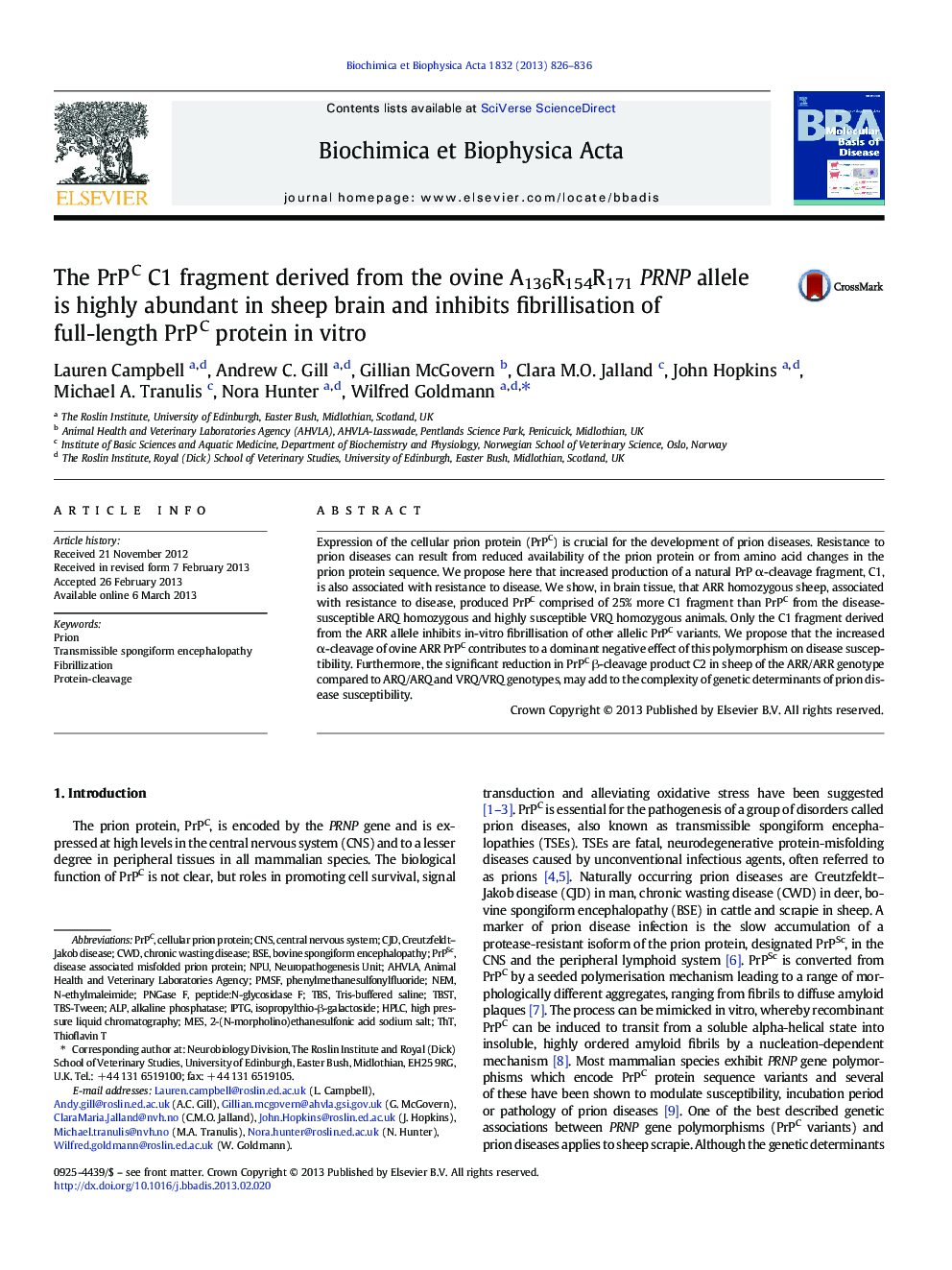| Article ID | Journal | Published Year | Pages | File Type |
|---|---|---|---|---|
| 1904853 | Biochimica et Biophysica Acta (BBA) - Molecular Basis of Disease | 2013 | 11 Pages |
•Cleavage of prion protein in the brain may influence susceptibility to prion disease.•Levels of truncated PrPC (C1) varied in sheep of different PRNP genotypes.•Only C1 from ARR variant inhibited the in-vitro fibril formation of prion protein.•C1 fragment formation may exert negative dominance over scrapie susceptibility.•The α-cleavage of PrPC may be a therapeutic target in prion disease.
Expression of the cellular prion protein (PrPC) is crucial for the development of prion diseases. Resistance to prion diseases can result from reduced availability of the prion protein or from amino acid changes in the prion protein sequence. We propose here that increased production of a natural PrP α-cleavage fragment, C1, is also associated with resistance to disease. We show, in brain tissue, that ARR homozygous sheep, associated with resistance to disease, produced PrPC comprised of 25% more C1 fragment than PrPC from the disease-susceptible ARQ homozygous and highly susceptible VRQ homozygous animals. Only the C1 fragment derived from the ARR allele inhibits in-vitro fibrillisation of other allelic PrPC variants. We propose that the increased α-cleavage of ovine ARR PrPC contributes to a dominant negative effect of this polymorphism on disease susceptibility. Furthermore, the significant reduction in PrPC β-cleavage product C2 in sheep of the ARR/ARR genotype compared to ARQ/ARQ and VRQ/VRQ genotypes, may add to the complexity of genetic determinants of prion disease susceptibility.
